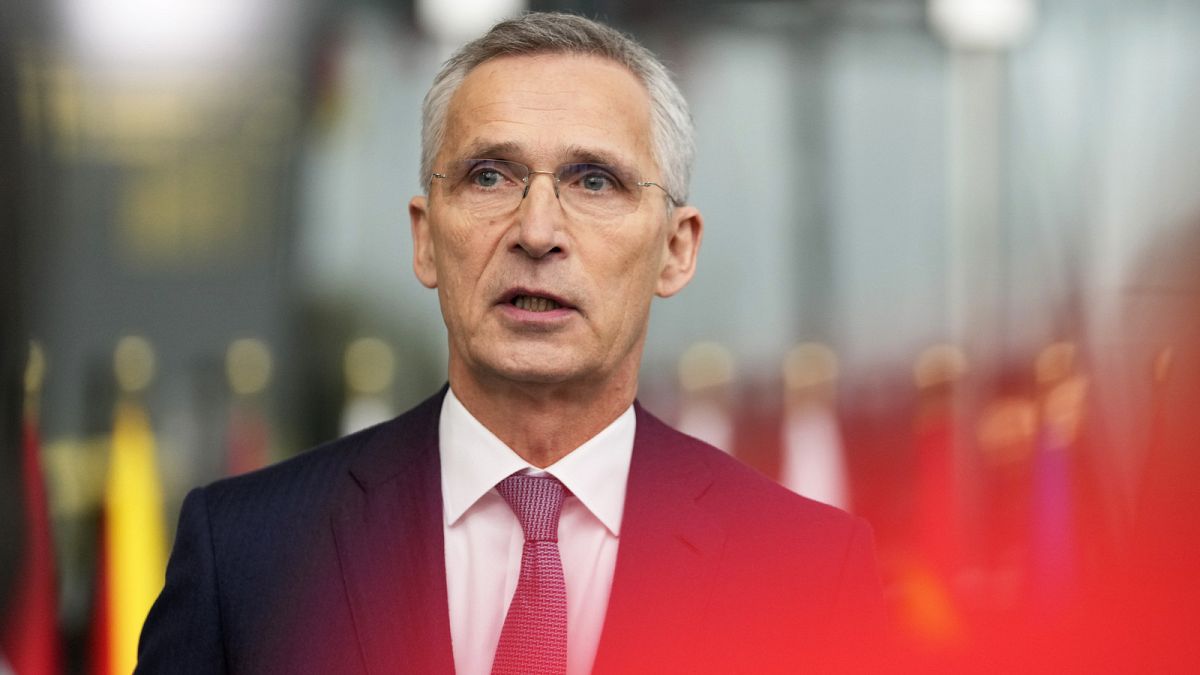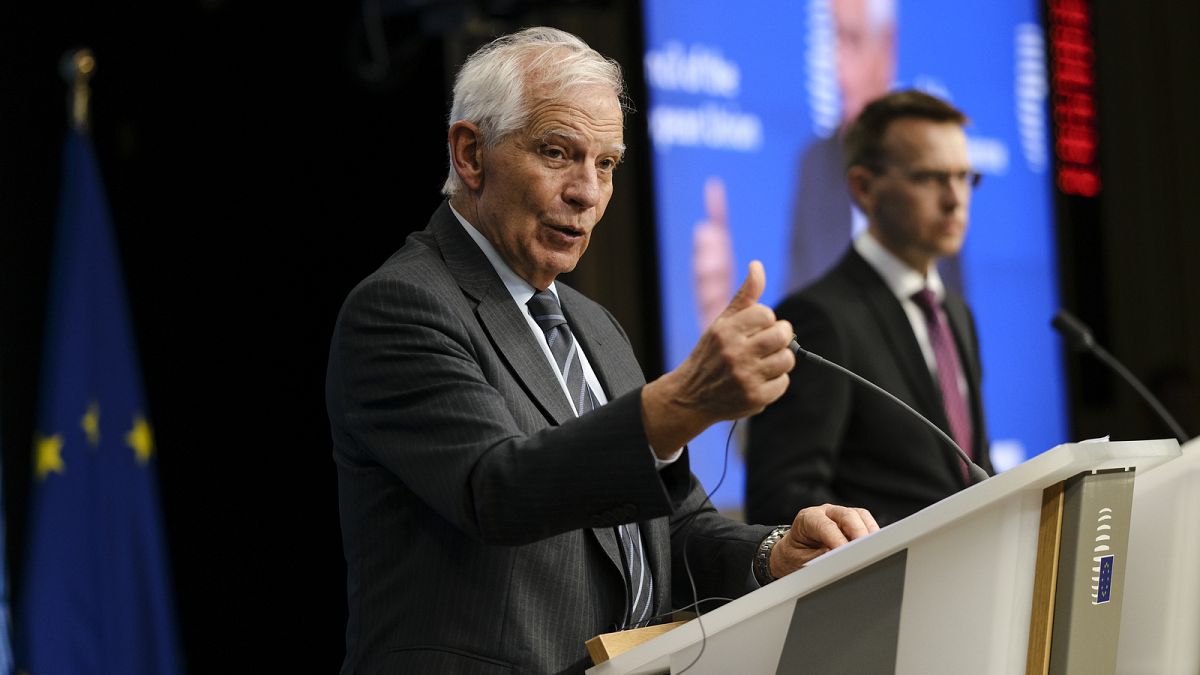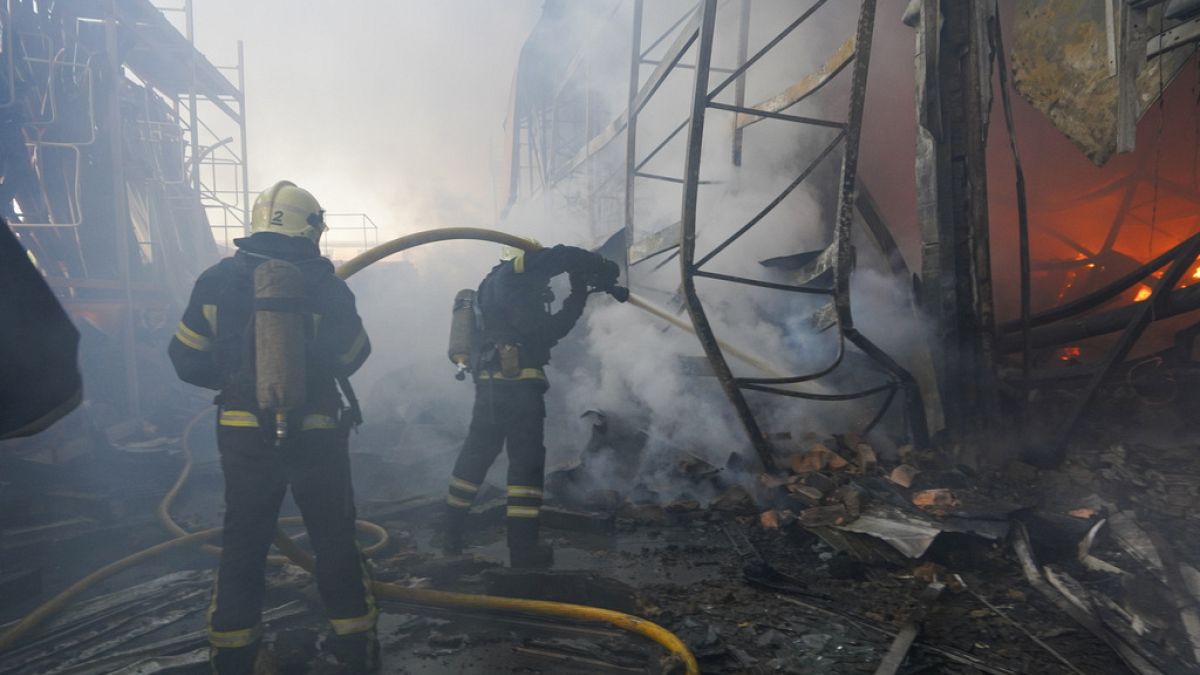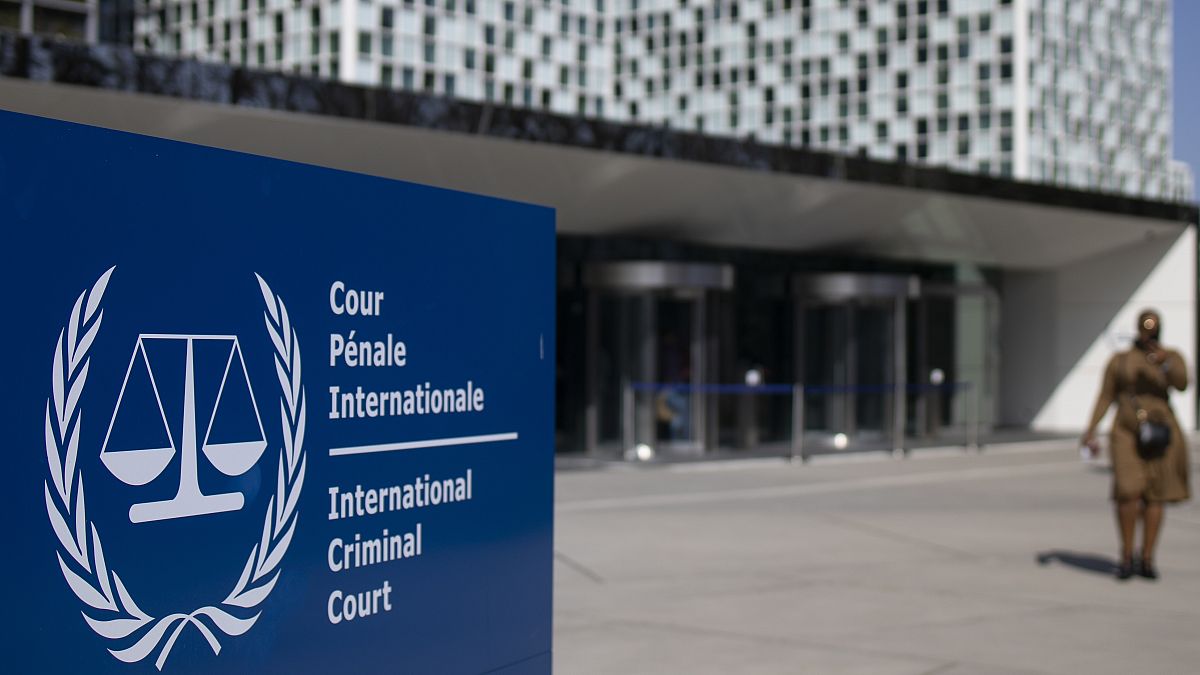World
EU pitches €20-billion plan in long-term military support for Ukraine
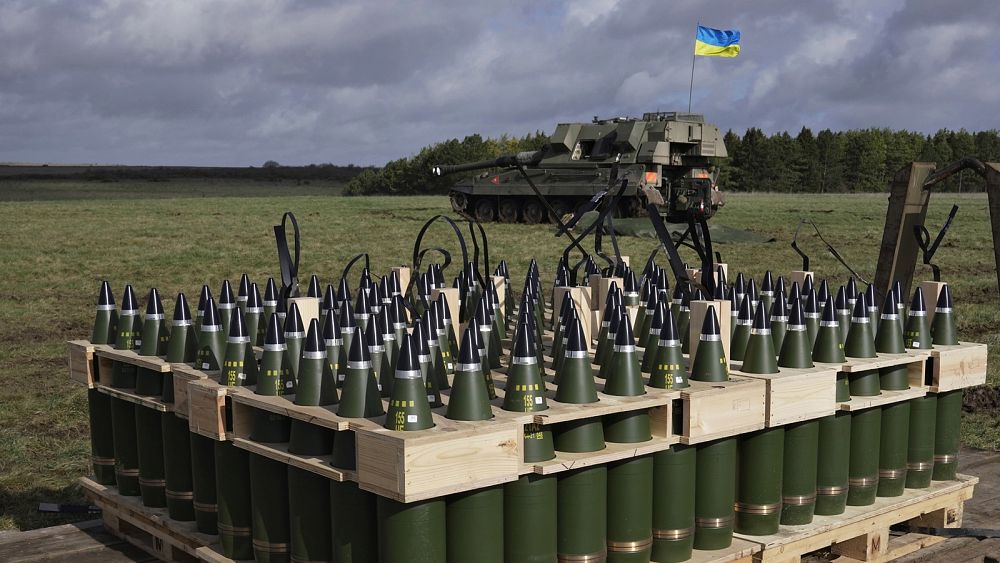
Josep Borrell, the European Union’s foreign policy chief, has proposed a new plan to provide “sustainable and predictable” military support to Ukraine.
Under the blueprint, the bloc will earmark €20 billion for the next four years to partially reimburse the expenses incurred by member states with their supplies to the war-torn nation, which is in the midst of a counteroffensive against the invading Russian troops.
The money will pay for lethal and non-lethal equipment, in line with the neutrality principle that a few member states maintain, and would constitute one of the security commitments EU leaders agreed to provide Ukraine at a summit last month.
The financial allocation, Borrell explained on Thurday evening after a meeting of foreign affairs ministers in Brussels, will be part of the European Peace Facility (EPF), the off-budget instrument that has so far channelled €5.6 billion in military assistance for the Ukrainian Armed Forces.
The existence of a separate tool is indispensable because the EU’s founding treaties prohibit using common funds to finance “operations having military or defence implications.”
“We propose the creation of a dedicated section under the European Peace Facility to provide up to €5 billion a year for the next four years for the defence needs of Ukraine,” Borrell said.
“It is the same tool, the European Peace Facility, which has been working very well, and we will continue using it but with a dedicated chapter inside it with specific funding.”
The €20-billion envelope still needs to be turned into a fully-fledged proposal and negotiated by member states. It will be discussed “in detail” at an informal ministerial meeting in Toledo, Spain, set to take place in late August, Borrell said.
“This is the evaluation of the needs and the costs of our long-term security commitments to Ukraine,” he added.
Borrell, who took only one question during the press conference, did not provide more information about the draft plan.
One of the questions that remain unanswered is how this “dedicated chapter” will be able to circumvent the veto power that has slowed down payments under the EPF programme. In fact, the latest €500 million tranche remains blocked by Hungary in retaliation for Ukraine’s decision to list OTP Bank as an “international sponsor of war.”
The latest proposal from Brussels comes at a particularly delicate time for Kyiv.
Ukrainian forces have spent the past few days trying to repel Russian strikes against the country’s grain storage facilities, something that Borrell described as an “atrocity.”
The attacks began shortly after President Vladimir Putin decided to suspend the Black Sea corridor that had facilitated the trade of low-cost cereals around the world. The Kremlin has warned that any ships leaving Ukrainian ports would be treated as “potential carriers of military cargo,” a threat that sent commodity prices surging.
“The world faces again a man-made problem of food security. Putin is using hunger as a weapon even against countries that will hesitate to condemn his illegal bloodshed in Ukraine,” Borrell said.
“The international community should respond decisively to this deliberate attempt by Putin to starve the world’s populations in order to gain extra money or to fight the illegal war.”

World
Could a left-nationalist party emerge in the next EU parliament?

Radio Schuman is your new go-to podcast to spice up your weekday mornings with relevant news, insights, and behind-the-scenes stories from Brussels and beyond.
It’s May 30 and it’s a week to go before the European elections. Across Europe, people are bracing for a surge of support for the far-right in the European Parliament. But what of the far left? It’s a small but loud faction, drawing the support of many young voters. It’s also the only group on the left of the political spectrum that is expected to gain seats.
We also discussed the global race for AI and the European Commission’s attempts to remain competitive.
This podcast is also produced by the journalist Eleonora Vasques and the sound engineer Zacharia Vigneron. Music by Alexandre Jas.
Additional sources • Zacharia Vigneron
World
Blue Jays pitcher Alek Manoah departs with apparent injury

CHICAGO (AP) — Toronto Blue Jays pitcher Alek Manoah left Wednesday night’s game against the Chicago White Sox in the second inning with an apparent injury.
With two out and a runner on third, Manoah was checked on by manager John Schneider and a trainer after throwing a 91.4 mph sinker to Dominic Fletcher for a ball. The big right-hander then departed after a short discussion on the mound.
There was no sign of any issue on the pitch to Fletcher. The Blue Jays did not immediately announce the reason for Manoah’s departure.
The 26-year-old Manoah is 1-2 with a 3.70 ERA in five starts this season. He was tagged for six runs, four earned, and five hits in 4 2/3 innings in a 6-2 loss at Detroit on Friday night.
Manoah began the season on the 15-day injured list with a right shoulder injury.
___
AP MLB: https://apnews.com/hub/mlb
World
Another US MQ-9 Reaper drone reportedly downed in Yemen
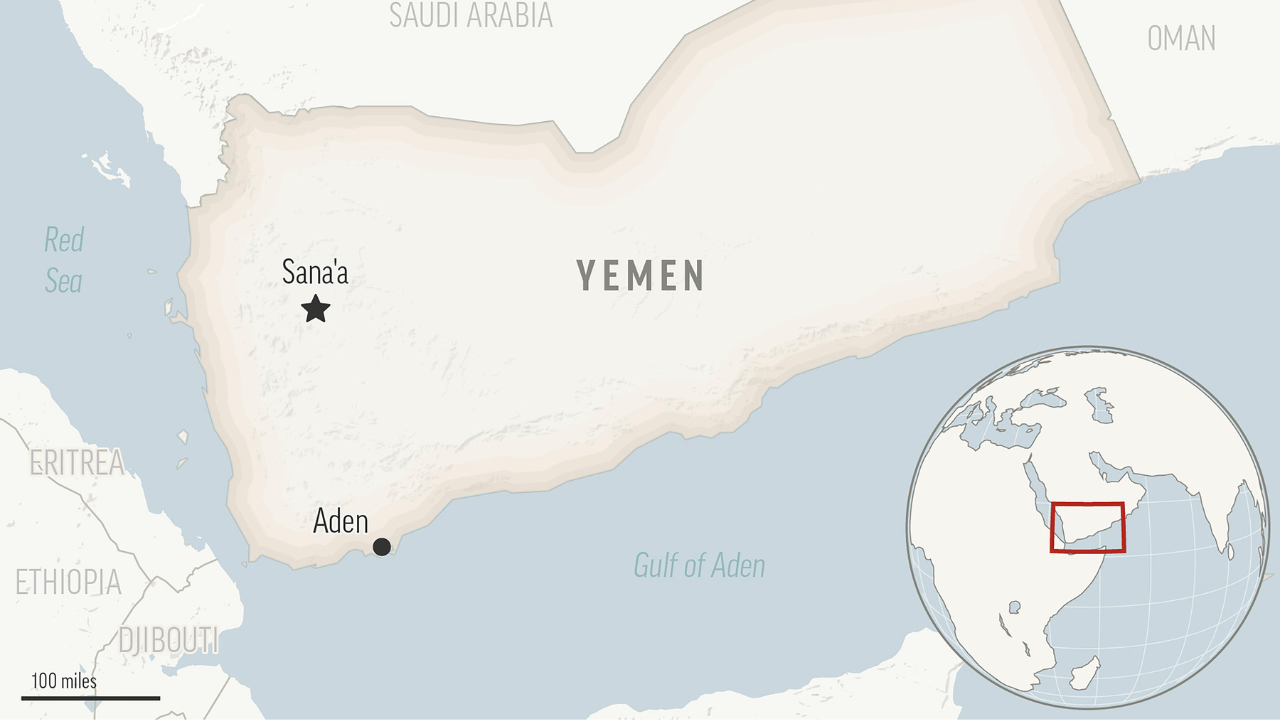
Another U.S. MQ-9 Reaper drone went down in Yemen, images purported to show Wednesday, as Yemen’s Houthi rebels continued attacks on shipping around the Red Sea over the Israel-Hamas war.
The Houthis released footage they said showed the aircraft being targeted with a surface-to-air missile in a desert region of Yemen’s central Marib province. It marked the third-such downing this month alone.
Images analyzed by The Associated Press showed the MQ-9 on its belly in the barren desert, its tail assembly disconnected from the rest of its body. At least one hatch on the drone appeared to have been opened after it landed there, though the drone remained broadly intact without any clear blast damage. One image included Wednesday’s date.
IRAN-BACKED HOUTHI REBELS IN YEMEN CLAIM THEY SHOT DOWN ANOTHER US DRONE AS ATTACKS INTENSIFY
Noticeably, the drone did not appear to carry any markings on it.
Authorities in Marib, which remains held by allies of Yemen’s exiled government, did not acknowledge the drone.
A U.S. defense official, speaking on condition of anonymity to discuss intelligence matters, told the AP that “the U.S. Air Force has not lost any aircraft operating within U.S. Central Command’s area of responsibility.” The official declined to elaborate.
The CIA also is believed to have flown Reaper drones over Yemen, both to monitor the war and in its campaign against al-Qaida in the Arabian Peninsula, Yemen’s local affiliate of the militant group. The CIA declined to comment when reached by the AP.
This is a locator map for Yemen with its capital, Sanaa. (AP Photo)
Located 75 miles east of Sanaa, Marib sits on the edge of the Arabian Peninsula’s Empty Quarter Desert at the foot of the Sarawat Mountains running along the Red Sea. The province has seen U.S. drones previously brought down there, in part because the region remains crucial for the outcome of Yemen’s yearslong war.
Since Yemen’s civil war started in 2014, when the Houthis seized most of the country’s north and its capital of Sanaa, the U.S. military has lost at least five drones to the rebels. This month alone, there’s been two others suspected shootdowns of Reapers that the American military hasn’t confirmed.
Reapers cost around $30 million apiece. They can fly at altitudes up to 50,000 feet and have an endurance of up to 24 hours before needing to land.
The Houthis in recent months have stepped up attacks on shipping in the Red Sea and the Gulf of Aden, demanding that Israel end the war in Gaza, which has killed more than 36,000 Palestinians there. The war began after Hamas-led militants attacked Israel on Oct. 7, killing about 1,200 people and taking some 250 hostage.
The Houthis have launched more than 50 attacks on shipping, seized one vessel and sunk another since November, according to the U.S. Maritime Administration.
Shipping through the Red Sea and Gulf of Aden has declined because of the threat.
On Wednesday, Houthi military spokesman Brig. Gen. Yahya Saree acknowledged the rebels attacked the bulk carrier Laax on Tuesday. Saree also claimed a number of other attacks on vessels that have not reported assaults without offering any evidence to support his claim. Saree in the past has exaggerated Houthi attacks.
-

 Culture1 week ago
Culture1 week agoFrom Dairy Daddies to Trash Pandas: How branding creates fans for lower-league baseball teams
-

 World1 week ago
World1 week agoPanic in Bishkek: Why were Pakistani students attacked in Kyrgyzstan?
-

 News1 week ago
News1 week agoRed Lobster files for bankruptcy after missteps including all-you-can-eat shrimp
-

 News1 week ago
News1 week agoThe states where abortion is on the ballot in November : Consider This from NPR
-

 Politics1 week ago
Politics1 week agoMichael Cohen swore he had nothing derogatory on Trump, his ex-lawyer says – another lie – as testimony ends
-

 Movie Reviews1 week ago
Movie Reviews1 week agoMai Movie Review: Emotionally powerful lead performances in this sensitive and heart-breaking romantic film
-

 News1 week ago
News1 week agoCity of Kyle falls short of ‘Kyle’ world record
-

 Politics1 week ago
Politics1 week agoAnti-Israel agitators interrupt Blinken Senate testimony, hauled out by Capitol police
